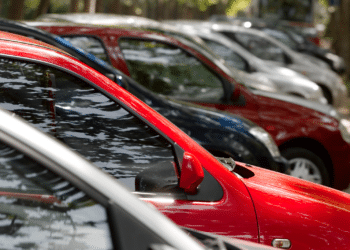These Are the Real Auto Finance Risks Today

But that doesn’t mean some risks might be too great. What should keep us up at night? Here are a few things risk factors for all you insomniacs out there.
DEEP BUYING
If lenders are buying too deep, that opens them to enhanced risks of too-accommodative underwriting, and loss rates could get out of hand. But consider that in 2013, despite the increase in originations, profitability fell for the subprime auto sector, according to NAF Association’s recent industry research. The profit motive, or lack thereof, is a market hedge against too aggressive underwriting, as well.
COMPETITION
When asked about the state of the market, the average lender today will grouse about competition and how some lenders are doing “stupid” things by underwriting too aggressively. And if you want, you can find anecdotal evidence of more competition:
- CarMax is piloting a subprime lending program, and some credit unions are getting into the space;
- Some of the banks, like U.S. Bank and BBVA Compass, are moving down the credit spectrum;
- Private equity firms have entered the space, in acquisitions like Blackstone-Exeter, Aquiline-First Investors, or Perella Weinberg with CarFinance Capital; and finally
- A Canadian lender recently bought a U.S. company, so the interest is even there from north of the border.
But it is important to not generalize from anecdotes. I have tried to determine whether, in fact, there is a marked increase in the number of auto finance companies. The NAF has increased its roster of members of the last couple of years, but the trade group reports that its new members are all companies that were previously in existence, not new entrants.
The State of Texas, one of the nation’s most dynamic auto finance markets, does not report a notable increase in the number of consumer credit licenses issued to auto lenders. In Florida, another key auto finance state, the number of applications for a motor vehicle retail installment seller license is higher this year, but not as high as it was in the 2011-2012 fiscal year. I am having a hard time finding evidence of a historically significant increase in number of auto finance companies this year, despite the kvetching of auto finance executives.
OVERCOLLATERALIZATION
Yes, overcollateralization of the auto could create a credit bubble around the asset. However, there is far less risk of this considering that the average new auto finance asset is 70 months, up from 69 months in 2012, and 60 months for used loans, up from 58 months. The overall Debt Service Ratio of consumers in the first quarter, according to Fed data, was 9.94%. Almost half of that — 4.78% — was for mortgages. Auto finance does not appear as potentially a debilitating credit burden for American consumers on par with mortgages. Also, it should be noted that the overall DSR right now is near modern historic lows.
CAPACITY AND ‘EXPECTATIONS’
To me, the greatest risk is capacity and expectations. The 16.24 million SAAR forecast for 2014 fosters an increase in capacity within the auto finance industry. Should there be a dramatic downturn in car sales, there would be more than a few auto finance companies that will have to quickly scale down to lower origination levels. We are now in Year Three of the auto sales expansion in this country, and at some point auto sales will reverse. When that happens, there will likely be a disconnect between auto finance capacity and demand, and that will cause auto finance failures, as well as irrational behavior to overcome declining origination volume.
Now, of course, I am no economist. But from my vantage point, for 2014 and 2015 at least, there appear to be few signs of such a dramatic reversal in the auto market. Vigilant monitoring of auto finance underwriting trends is certainly merited, as it always is, but to call auto finance a “ticking timebomb” is, in my view, to fall prey to anecdotally driven inferences about the market as a whole, and actions based on such inferences have the potential of undermining all of auto finance — and by extension, the entire auto industry. And we all know how important the auto industry is to the US economy.
This is the fourth in a series of posts on the state of auto finance today.








